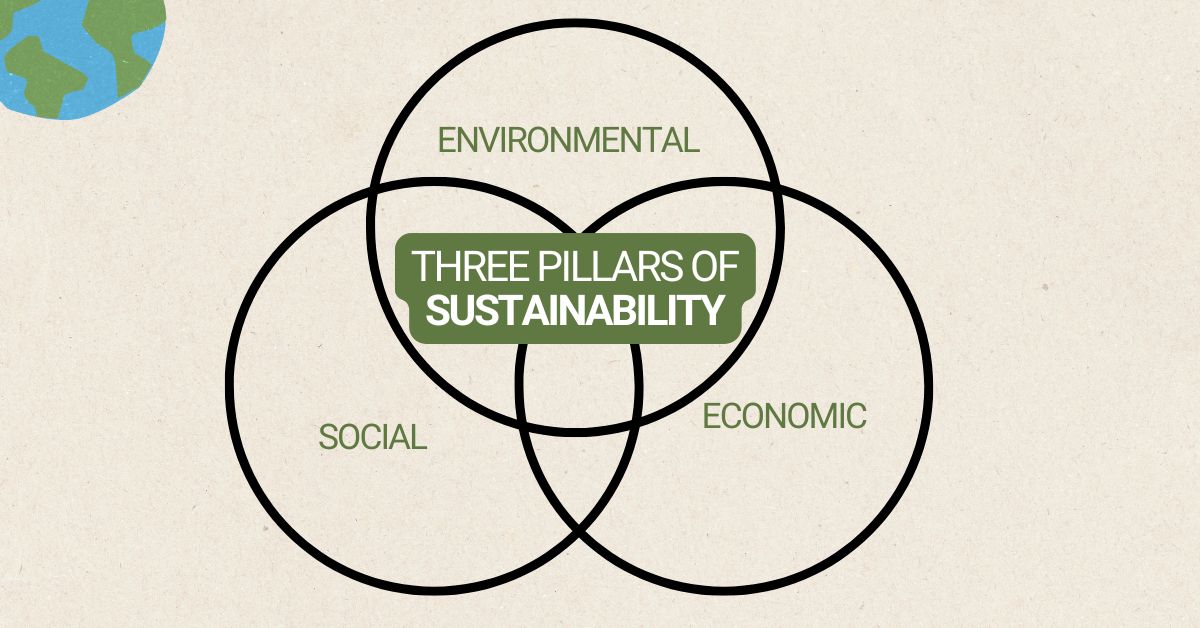What are the Three Pillars of Sustainability?

The Concept of the Three Pillars of Sustainability
The three pillars of sustainability – environmental, social, and economic – provide a framework for understanding and addressing the multifaceted nature of sustainability. These three pillars are interconnected and interdependent, each playing a crucial role in the pursuit of a sustainable future.
Pillar 1: Environmental Sustainability
Importance of Environmental Sustainability
Environmental sustainability is the foundation upon which all other aspects of sustainability rest. It involves the responsible use and protection of natural resources, ensuring that the earth’s ecosystems can continue to support life and thrive for generations to come. This includes preserving biodiversity, reducing greenhouse gas emissions, and minimizing waste and pollution.
Strategies for Achieving Environmental Sustainability
- Renewable Energy: Transitioning to renewable energy sources, such as solar, wind, and hydropower, can significantly reduce our carbon footprint and dependence on fossil fuels.
- Sustainable Resource Management: Implementing strategies for the efficient use and recycling of natural resources, including water, minerals, and raw materials, can help conserve these precious resources.
- Sustainable Land Use: Promoting sustainable land-use practices, such as sustainable agriculture, forestry, and urban planning, can protect natural habitats and ecosystems.
- Waste Reduction and Recycling: Implementing comprehensive waste management systems, including waste reduction, reuse, and recycling, can help minimize the environmental impact of human activities.
Also read: Understanding Cap and Trade: All You Need to Know
Pillar 2: Social Sustainability
Key Elements of Social Sustainability
Social sustainability encompasses the well-being and quality of life of individuals and communities. It involves ensuring that all members of society have access to basic resources, such as education, healthcare, and housing, and that social equity and justice are upheld.
Examples of Social Sustainability in Action
- Inclusive and Equitable Education: Providing high-quality, accessible education for all, regardless of socioeconomic status or background, can promote social mobility and empower individuals to contribute to their communities.
- Accessible Healthcare: Ensuring that all individuals have access to affordable, quality healthcare can improve overall community health and well-being.
- Affordable Housing: Developing and maintaining affordable housing options can help address issues of homelessness and housing insecurity, promoting social stability and community cohesion.
- Community Engagement and Empowerment: Encouraging community involvement, fostering social networks, and empowering individuals to participate in decision-making processes can strengthen social ties and promote a sense of belonging.
Pillar 3: Economic Sustainability

The Role of Economic Sustainability in Building a Greener Future
Economic sustainability is essential for supporting the long-term viability of environmental and social sustainability initiatives. It involves the development of economic systems and practices that are financially viable, equitable, and environmentally responsible.
Integrating the Three Pillars for a Holistic Approach to Sustainability
Achieving true sustainability requires the integration and balance of all three pillars: environmental, social, and economic. By addressing these interconnected aspects, organizations and communities can create a more holistic and effective approach to sustainability.
Also read: What is Renewable Energy: A Sustainable Solution for a Greener Future
Case Studies Highlighting Successful Sustainability Initiatives
- Renewable Energy in Denmark: Denmark has emerged as a global leader in renewable energy, with wind power accounting for over 50% of its electricity generation. This transition has not only reduced the country’s carbon footprint but has also created a thriving green economy and high-quality jobs.
- Sustainable Urban Development in Singapore: Singapore has implemented a comprehensive approach to sustainable urban development, including investments in public transportation, green buildings, and urban greenery. This has resulted in improved air quality, reduced energy consumption, and enhanced liveability for its residents.
- Fair Trade in Developing Countries: The Fair Trade movement has empowered small-scale producers in developing countries by ensuring fair wages, safe working conditions, and environmental stewardship. This has led to improved social and economic outcomes for these communities while promoting sustainable agricultural practices.
Challenges and Obstacles to Achieving Sustainability
Despite the clear benefits of sustainability, there are several challenges and obstacles that must be overcome. These include:
- Overcoming short-term thinking and prioritizing long-term sustainability
- Aligning the interests of diverse stakeholders, including governments, businesses, and communities
- Addressing the upfront costs and perceived trade-offs associated with sustainability initiatives
- Overcoming technological and infrastructural limitations in certain regions
The Role of Individuals in Promoting Sustainability
While governments and organizations play a crucial role in driving sustainability initiatives, individuals can also make a significant impact through their everyday choices and actions. This includes:
- Adopting sustainable consumption habits, such as reducing waste, conserving energy and water, and choosing eco-friendly products.
- Supporting sustainable businesses and initiatives through conscious purchasing decisions and advocacy.
- Engaging in community-level sustainability projects and volunteering efforts.
- Advocating for sustainability-focused policies and regulations at the local, national, and global levels.
Join the sustainability movement and become a champion for a greener future. Explore practical steps you can take to integrate the three pillars of sustainability into your daily life and encourage others to do the same. Together, we can build a more sustainable world for generations to come.
Conclusion: Building a Greener Future through the Three Pillars of Sustainability
The three pillars of sustainability – environmental, social, and economic – provide a comprehensive framework for addressing the complex challenges facing our world. By integrating these interconnected aspects, we can create a more sustainable future that meets the needs of the present without compromising the ability of future generations to meet their own needs.
Through innovative solutions, collaborative partnerships, and a deep commitment to sustainability, we can transform our societies, economies, and environments to be more resilient, equitable, and environmentally responsible. The path to a greener future may not be easy, but by embracing the three pillars of sustainability, we can build a better world for all.




